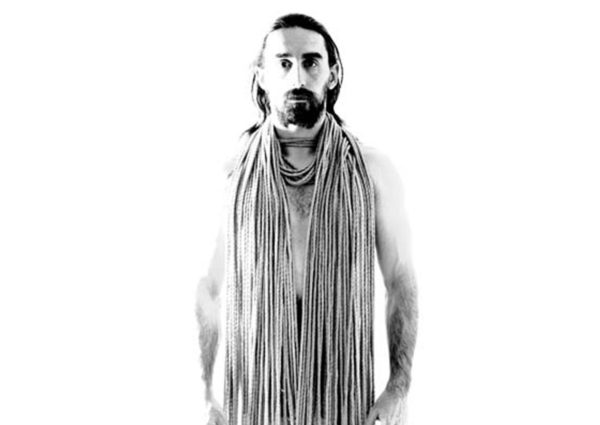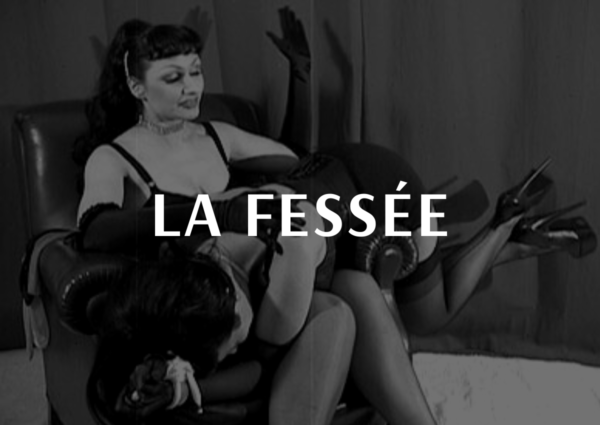[18][17] Mandinkas recite chapters of the Qur'an in Arabic. [66], The kora has become the hallmark of traditional Mandinka musicians". [32], With the migration, many gold artisans and metal working Mandinka smiths settled along the coast and in the hilly Fouta Djallon and plateau areas of West Africa. Linguistic Affiliation. Donner, Fred McGraw. Walnut Creek, CA: Altamira Press. She studied dance among the Mandinka extensively and found that, like the Griot tradition, it captures, preserves and communicates Mandinka indigenous knowledge. The Formation of Islam: Religion and Society in the Near East, 600-1800. Sometimes cattle are kept as a means of gaining prestige, for ritual sacrifices, or to use as a bride-price. The lady pictured above, Tako Taal, is the head of Jufureh because she has no brothers. This is part of a belief system of Animism, not Islam. One of the most famous dyamu names is Toure', which has been the name of leaders in many states, including ancient Ghana, ancient Mali, Songhai, and modern Guinea. However, more than half the adult population can read the local Arabic script (including Mandinka Ajami); small Qur'anic schools for children where this is taught are quite common. This Mandinka kinship system, favoring the . Samanguru was hostile to the Mandinka people who lived in that area. As Islam spread throughout the Middle East and the world, it moved from being a religion of nomadic peoples to one centered in cities. Schaffer, Matt (2003). The Peoples of the World Foundation. "The Dichotomy of Power and Authority." Eve. LOCATION: Burkina Faso, Cte d'Ivoire The ancestors of these people are associated with the great empire of Mali. [43], Slavery grew significantly between the 16th and 19th century. Chicago: The University of Chicago Press. "Mandinka The Arabic script is used in the semi-formal Islamic schools often run by marabouts. They controlled the land, collected the taxes, and followed the old animist religion. All rights reserved. The Mandinka constitute one of the larger groups of the well-known and wide-spread Mande-speaking peoples of ancient western Sudan. In Ghana, for example, the Almoravids had divided its capital into two parts by 1077, one part was Muslim and the other non-Muslim. Today, the memory of the Mandinka and their history in the Transatlantic Slave Trade has been immortalised in the story of the Amistad Slave Ship . Here, it is the inability or the unwillingness of parents to send girls to school that accounts for their lower literacy rate. The Mandinka mansas lost revenues, which further weakened their political power. The spread of Islam through West Africa happened over a long period and is not reliably documented in detail. Senegambia and the Atlantic Slave Trade. comelec district 5 quezon city. Matt Schaffer (editor). As elsewhere in the developing world, this often restricts their access to formal education. Different families took turns choosing the mansa. ancient Iran religions and . The exports and imports do not match, because of the large number of deaths and violent retaliation by captured people on the ships involved in the slave trade. Describe slavery in Mandinka society both before and after the Europeans came to the Gambia region of West Africa. Bloomington: Indiana University Press. Women join at the time of their circumcision and remain until marriage or the birth of the first child. When you greet someone you say "Salaam aleikum" which means "Peace be upon you" and they would reply Maleekum salaam which means "and peace be upon you" (Arabic). 2023 Constitutional Rights Foundation. Encyclopedias almanacs transcripts and maps, Encyclopedia of World Cultures Supplement. This group today includes hired hands who provide wage-labor to, for example, farmers. They could be called upon to work on community projects like repairing the village enclosure wall. Write a brief story of Kunta Kintes life in Africa from 1750 to 1800. A Mandinka man is legally allowed to have up to four wives, as long as he is able to care for each of them equally. They were taken to the mines of Mexico and the sugar plantations of the Caribbean. Mandinka culture is rich in tradition, music, and spiritual ritual. Jufureh is interesting for a different reason also. Their slave exports from this region nearly doubled in the second half of the 18th century compared to the first, but most of these slaves disembarked in Brazil. They also make their political and social views known and thus are able to wield varying degrees of power and pressure at the village level. Mandinka marabouts led a series of jihads against the animist Mandinka ruling families. Alexander the Great's Macedonian Army. By 1800, the privileges of the ruling families had led to widespread dissatisfaction among the Mandinka people. The strings are made of fishing line (these were traditionally made from a cow's tendons). His taxes were high, he felt it was his privilege to carry off Mandinka women, and he failed to maintain law and order along the trade routes that once prospered in West Africa. During this time, they learn about their adult social responsibilities and rules of behaviour. The first wife has authority over any subsequent wives. The village political chief usually is associated with a power struggle that is based on how the charter of the village is written. It was not until the early 1960s that that region achieved independence. While Ajami traditions of Mande languages appear to have developed very early; they remain the least well documented. Others raise goats, sheep, bees, poultry, and dogs to earn additional income. How was this conflict resolved. "Djinns, Stars and Warriors: Mandinka Legends from Pakao, Senegal" (, This page was last edited on 1 March 2023, at 13:46. The two traditions morphed over time into the role of the marabout. Below them were large numbers of poor farming families and landless artisans. New York: New American Library. They, too, helped to undermine the old Mandinka order. Many villagers never travel more than five miles (eight kilometers) from their homes. While social divisions are quite complex, a great deal of social behavior is influenced by this philosophy. However this is only a back-drop to the struggle for social and political control based on social divisions. The Mandinka constitute one of the larger groups of the well-known and wide-spread Mande-speaking peoples of ancient western Sudan. Mandinkas continue a long oral history tradition through stories, songs, and proverbs. The most important change coming out of this war was the permanent establishment of Islam. Eastern Maninka, The Mandinka people significantly influenced the African heritage of descended peoples now found in Brazil, the Southern United States and, to a lesser extent, the Caribbean. They had to share the taxes they collected with the village leaders. Before the Asante invasion, the Agotime had just such a . Then, copy and paste the text into your bibliography or works cited list. So the conversion of the Mandinka to Islam would have occurred at different times in different areas. The mythical origin of the Malink and the Bambara people are their mythical ancestors, Kontron and Sanin, the founding "hunter brotherhood". They provide for much of the entertainment in the area and participate in collective charitable work. Or he may cure someone possessed by evil spirits using traditional, herbal medicine. Photo: Fine Art America. [CDATA[ All Rights Reserved. It is practiced faithfully among the Mandinka, although there are existing variations of the religion. A Mandinka religious and cultural site under consideration for World Heritage status is located in Guinea at Gberedou/Hamana. Preparation is made in the village or compound for the return of the children. The word "Bedu" in the Arabic language, means "one who lives out in the desert," is the root of the term Bedouin. After Rene Claude Geoffroy de Villeneuve's L'Afrique, Paris, 1814. The husband has complete control over his wives and is responsible for feeding and clothing them. This would have been a Bainuk settlement before becoming Jola. Although this term refers to people who have the same name, those people are all believed to be descended from the same ancestor. [49], Walter Hawthorne (a professor of African History) states that the Barry and Rodney explanation was not universally true for all of Senegambia and Guinea where high concentrations of Mandinka people have traditionally lived. Religious Beliefs. They inhabit a large area roughly the shape of a horseshoe, starting from their home in Gambia, extending through the southeastern region of Senegal, bending across the northern and southern sections of the republics of Guinea and Mali, extending through northern Sierra Leone, and descending into northwestern Cote d'Ivoire (formerly the Ivory Coast Republic). Negre Manding. Inheritance. sanzione assicurazione drone; geografia terza elementare quaderno; ospedale seriate nefrologia; //]]>, ETHNONYMS: Mandika, Mandingo, Malinke (Mandinque-Manding). Haley related that Kunta, then in his teens, was captured by white and black slave raiders near his home and then transported to America. Asante was impervious to Christianity, having rejected missionary activities in its boundaries. Marriage. As we know other religion such as "christian" for the person who is beliefs in Holy book: Injhil are called that. The spread of Islam through West Africa happened over a long period and is not reliably documented in detail. But, in doing this, the British upset the balance of power in the area. [48], The historian Walter Rodney states that Mandinka and other ethnic groups already had slaves who inherited slavery by birth, and who could be sold. He also collected fees from traders traveling through his lands. Before Islam, the people of Iran also had religions such as Zoroaster, Manichaeism, etc., and after the advent of Islam, they became Muslims. These units are made up of the youths of a village, roughly of the same age within a five-to-seven year range. . Cambridge, UK: Cambridge University Press, 2003. These lineages are preserved via the Griot tradition and these people are considered to be at the top of the social ladder. "Mandinka By the end of the 1700s, the western savanna was colonized by the French, British, and Portuguese. In the Gambia, we have found missionary translations from Biblical passages and sermons in Mandinka Ajami. Soundiata Keta converted to Islam as well as many Mandinka groups. The fighting between the two Mandinka factions continued for another 30 years. 2023, Within most Mandinka kingdoms, the leader of an important family could become the king (mansa). Egypt's ancient culture was devastated by the invasion of what leader and his army? The most important change coming out of this war was the permanent establishment of Islam. . Today, over 90 percent of the people of the Gambia and neighboring Senegal are Muslims. Among these syncretists spirits can be controlled mainly through the power of a marabout, who knows the protective formulas. The Mandinko were typical of such West African cultures. The behavior of the polygynous family is reflected in kinship terms. Rivalry is expected between half siblings; conversely, affection is expected between full siblings. Joining such societies and obeying their rules and taboos help make people conform to what are considered acceptable forms of behavior. Two Mandinka societies existed. Both sides in a dispute presented evidence, witnesses were cross-examined, and the alkalo made the decision, which almost always reflected the consensus of the village. According to Haley, his ancestor Kunta Kinte was born about 1750 in one of the Mandinka kingdoms along the Gambia River in West Africa. A Mandinka woman during a traditional music and dance ceremony. ALTERNATE NAMES: Moose, Moshi, Mosi It is the second convention of the historians (the first being to . Islam was established in the area many centuries before the arrival of Europeans. The authority inherent in a political position lies in the belief that an ancestor of the ritual chief was the first immigrant to the area and came to terms with the local spirits of the land. The Camara (or Kamara) are believed to be the oldest family to have lived in Manden, after having left Ouallata, a region of Wagadou, in the south-east of present-day Mauritania, due to drought. Shihab al-Umari, the Arabic historian, described his visit and stated that Musa built mosques in his kingdom, established Islamic prayers and took back Maliki school of Sunni jurists with him. Handcoloured stipple copperplate engraving from Frederic Shoberl's The World in Miniature: Africa, A description of the manners and customs Moors of the Sahara and . Ray Waddington. Furthermore, he would have passed down this power through the male blood line. New York: Hill and Wang. London: Longman Press. The existing Mandinka Ajami texts in Senegambia includes the works of some of the most renowned Mandinka scholars who were pivotal in spreading Islam and training generations of scholars and community leaders in Senegambia and the Bijini area of Guinea Bissau. Kita Maninka language, However the traditional religion remained much more practiced, by the majority of the Mandinka, until the XIXe century. [23] Most Mandinka live in family-related compounds in traditional rural villages. countdown to spring training 2022; Hola mundo! Today the Mandinka still practice Islam but have infused much of their own culture into the religion. Their traditional society has featured socially stratified castes. Long before Islam became a dominant religion on the Arabian Peninsula, the land was inhabited by people who lived off the land with their own unique system of beliefs. In times past the Mandinka were among the main traders in the region, but very few are concerned exclusively with trade these days. Although Western medical practices and values are becoming influential in Africa in general, the holy men of the Mandinka society are still consulted as medical healers. The Mandinka produce a wide variety of clothing to sell. This slave trade volume excludes the slave trade by Swahili-Arabs in East Africa and North African ethnic groups to the Middle East and elsewhere. Men and women had different work responsibilities. They founded over 60 Islamic learning centers in Senegambia, which, according to local oral sources, served as refuge for runaway slaves in the pre-colonial era. Over the centuries that followed, Africans settled and developed their own culture, until European slave ships landed to begin bartering for human cargo. This migration began in the later part of the 13th century.[30]. Mentioned in a number of interviews, including, largest ethnic-linguistic groups in Africa, various European colonies in North America, South America and the Caribbean, Gambia Committee on Traditional Practices, "Mansa Musa Makes His Hajj, Displaying Mali's Wealth in Gold and Becoming the First Sub-Saharan African Widely Known among Europeans | Encyclopedia.com", "Africa: Mali - The World Factbook - Central Intelligence Agency", "Africa: Guinea The World Factbook - Central Intelligence Agency", "2013 Population and Housing Census: Spatial Distribution", "Africa: Senegal The World Factbook - Central Intelligence Agency", "Sierra Leone 2015 Population and Housing Census National Analytical Report", "Africa: Liberia The World Factbook - Central Intelligence Agency", "Recenseamento Geral da Populao e Habitao 2009 Caractersticas Socioculturais", "Putting the History Back into Ethnicity: Enslavement, Religion, and Cultural Brokerage in the Construction of Mandinka/Jola and Ewe/Agotime Identities in West Africa, c. 16501930", 20.500.11820/d25ddd7d-d41a-4994-bc6d-855e39f12342, "Bound to Africa: The Mandinka Legacy in the New World", "Bound to Africa: The Mandingo Legacy in the New World", "Jihad and Social Revolution in Futa Djalon in the Eighteenth Century", Accelerating the Abandonment of Female Genital Mutilation/Cutting (FGM/C) in The Gambia, LEGISLATION TO ADDRESS THE ISSUE OF FEMALE GENITAL MUTILATION (FGM), Multi-Agency Practice Guidelines: Female Genital Mutilation, "Architecture vernaculaire et paysage culturel mandingue du Gberedou/Hamana - UNESCO World Heritage Centre", http://publicationsindex.nationalgeographic.com/, "Bound to Africa: The Mandinka Legacy in The New World", ETHNOLOGUE Languages of the World- Thirteenth Edition (1996), Pauls, Elizabeth Prine (February 2007). In Muslim villages, the religious leader (alimamo) shared some of the leadership responsibilities with the alkalo. What is a caste system? A celebration marks the return of these new adults to their families. Robert W. Nicholls. [40], According to Toby Green, selling slaves along with gold was already a significant part of the trans-Saharan caravan trade across the Sahel between West Africa and the Middle East after the 13th century. The Masked Figure and Social Control: The Mandinka Case. This expansion was a part of creating a region of conquest, according to the oral tradition of the Mandinka people. Mandinka Ajami manuscripts include secular as well as religious texts. About 5,000 slaves a year were shipped to America from the Gambia during the 17th and 18th centuries. As the demand grew, states Barry, Futa Jallon led by an Islamic military theocracy became one of the centers of this slavery-perpetuating violence, while Farim of Kaabu (the commander of Mandinka people in Kaabu) energetically hunted slaves on a large scale. Each ethnic group has its own variations and, for the Mandinka, women are far more likely than men to be seen participating in such ceremony. The Mandinka celebrate the end of Ramadan, Tabaski (the slaying of the ram), and the Prophet Muhammad's birthday. During the 1800's, Islam was introduced to the Mandinka people. [27], Between the 16th and 19th centuries, many Muslim and non-Muslim Mandinka people, along with numerous other African ethnic groups, were captured, enslaved and shipped to the Americas. There are indications that the main movements of many of these peoples occurred in the fourteenth and fifteenth centuries. Charry, E.S., (2000) Mande Music: Traditional and Modem Music of the Maninka and Mandinka of Western Africa. As a result of the British naval patrols, slave trading declined sharply in the Gambia area. The Kingdom of Ghana was founded by what peoples in western Africa? The kora is a twenty-one-stringed West-African harp made out of a halved, dried, hollowed-out gourd covered with cow or goat skin. If someone travels to another village, he or she is shown hospitality by the villagers who share his or her last name. Today, over 99% of Mandinka are Muslim. Both authority figures and individuals outside the authority structure compete for control by employing methods to gain this occult power. The highest consisted of "freeborn" farmers who worked the land. They founded over 60 Islamic learning centers in Senegambia, which, according to local oral sources, served as refuge for runaway slaves in the pre-colonial era. No important decision is made without first consulting the marabout. "Malinke people". In 1455, the Portuguese became the first Europeans to enter the Gambia River. Mali first appeared on a European map in 1339 which reflects what? They were also given land to farm which made it possible for them to buy their freedom. Relief of the goddess Allt, one of the three patron gods of the city of Mecca. This is not to say that indigenous African spirituality represents a form of theocracy or religious totalitarianismnot at all. For other cultures in Sudan, see List of Cultures by Country in Volume 10 and under specific culture names in Volume 9, Africa and the Middle East. mandinka religion before islamtenuta suvereto bibbona. Young boys are taught to take care of men's crops and herd cattle. Both men are the elders of a sublineage tier of two dominant (royal lineage) families, and their offices are invested with the authority of the legendary charter of the founding of the village. NEXT I Agree to F2FA terms These individuals (also known as griots were the keepers of the Mandinka oral history and family genealogies. Pick a style below, and copy the text for your bibliography. Although the fact is little publicized, the Arab world's second holiest city, Medina, was one of the allegedly "purely Arab" cities that actually was first settled by Jewish tribes. Today, a marabout in Mandinka society may play many roles. On this Wikipedia the language links are at the top of the page across from the article title. They believe that the spirits can be controlled only through the power of a marabout, who knows the protective formulas. For many years, the Muslims of the Ivorian savannah were more concerned with commerce than politics, accommodating 'infidel' authorities, and rejecting jihad by the sword in order to better devote themselves to Koranic education and pious practices .Today's Muslim elite claim this legacy of an Islam of peacecompletely at odds with an . Conflict. LOCATION: Eastern Mali, western Niger, northern Benin A Short Study of the Western Mandinke Language. Encyclopedia.com. Additionally, there are Mauritanians, Moroccans, and Lebanese in the country. Ritual washings and daily prayers are usually observed as well. [18] Numbering about 11 million,[19][20] they are the largest subgroup of the Mand peoples and one of the largest ethnic-linguistic groups in Africa. The Mandinka view Allah as the one supreme god but see him as inaccessible and with little concern for the daily affairs of his creations. Indigenous Dances of West Africa (short film on YouTube), Tragic End For Mamadoe The Mandinka Faith Healer. At the bottom are the descendants of slaves and prisoners of war (those two groups were not mutually exclusive). They speak a Mandekan language of the Mande branch of the Niger-Congo family. [38] Slaves were part of the socially stratified Mandinka people, and several Mandinka language words, such as Jong or Jongo refer to slaves. In the Mandinka kingdoms, individuals could not buy, sell, or "own" plots of land. Berry, Boubacar (1995). Sometimes, work parties would divide into two teams and, with much singing and chanting, compete to see which one could finish in the quickest time. Construction Engineering and Management. We originated from Tumbuktu in the land of the Mandinka: the Arabs were our neighbours there All the Mandinka came from Mali to Kaabu. The children of slaves were born slaves. Religion Practiced by Slaves. Click/tap an image to begin a high-quality, captioned slideshow and, where available, stock licensing information. They believe that the spirits can be controlled only through the power of a marabout, who knows the protective formulas. Religious Practitioners. mandinka religion before islam. It is not uncommon for someone to pray in the village mosque and then sacrifice a chicken to the village spirits. Generally, the Mandinka believe that the sanctioned behavior of the family compound finds its way into the larger society. The Soninke people. Certain tasks are assigned specifically to men, women, or children. A traditional feature of Mandinka society is the "nyamakala" (craft groups), which often have religious and ritual responsibilities as well as their skilled occupations. A young Mandinka girl helping with the harvest. The Mandinka have a long established practice of oral history and literature. Discussion of the Ashanti as competing with the . [63][64] This cultural practice, locally called Niaka or Kuyungo or Musolula Karoola or Bondo,[65] involves the partial or total removal of the clitoris, or alternatively, the partial or total removal of the labia minora with the clitoris. The Mandinko recognized three castes. London: London Publishing Company. Part 1 contains a chapter "Arabia before Islam" in the broader context of "The Near East before Islam." Excellent textbook that reflects informed scholarship on the rise of Islam. A young Mandinka girl on her way home from school. Mandinka scholars authored important texts dealing with various religious and non-religious subjects, in both poetry and prose forms. Some groups only worshipped Allah, such as the South Arabians, where he is referred to as Rahman, or "The Most Merciful". All rights reserved. The children spent the day driving small wild animals away from the crops. In addition to clothing they sell or trade locally grown foodstuffs. The ritual chief has some authority in regard to land tenure. For the Mandinka, this predates Islam. [42] With the arrival of Portuguese explorers in Africa as they looked for a sea route to India, the European purchase of slaves had begun. In Senegal, we have found an Ajami chronicle of the state of Kaabu (which encompassed portions of The Gambia, Senegal and Guinea Bissau from the 16th to the 19th centuries), as well as a text calling for the downfall of Adolf Hitler. The Islamic schools for young boys mentioned above are one example, but there are others. Answer: A good answer will include any of the following: Discussion of the Fulani as pastoralists. p. 6. Slavery, as we understand it historically, is now illegal everywhere. Before undergoing this, young boys and girls join separate male- or female-only affiliations (run by adults) that prepare them for the norms of adult life by teaching them what is acceptable conduct and what is taboo. In most cases, no important decision is made without first consulting a marabout. Nomadic Tribes in Pre-Islamic Arabia One of the major cultures that dominated the Arabian Peninsula just before the rise of Islam was that of the nomadic Bedouin people. Islam was omnipresent, and social stratification was highly developed. All the various ethnic groups are familiar with this formal salutation. Polygamy has been practiced among the Mandinka since pre-Islamic days. There are five pillars - or basic tenets - of the Islamic faith. Charry, Eric S. (2000). It typically follows the transition to a sedentary (or semi-sedentary) lifestyle and marks the onset of what we recognize to be culture. Their dance style focuses mainly on arm and leg movement. In Ghana, for example, the Almoravids had divided its capital into two parts by 1077, one part was Muslim and the other non-Muslim. Wives are expected to live together in harmony, at least superficially. Today the Mandinka still practice Islam but have infused much of their own culture into the religion. He is the main character in Alex Haley's novel Roots: The Saga of an American Family. [2] According to Richard Turner a professor of African American Religious History, Musa was highly influential in attracting North African and Middle Eastern Muslims to West Africa. The most significant religious authority in Mandinka society is the marabout, the Muslim holy man. We suspect that Mande Ajami developed earlier than the others, perhaps even in the 14th century CE, and around the oral pedagogies which teachers developed for instruction in the Quran and the Arabic language. [45], Scholars have offered several theories on the source of the transatlantic slave trade of Mandinka people. Men join at the time of their circumcision and remain in the group until the age of thirty-five. chiesa santa teresa anzio orari messe. At death, a Mandinka becomes a "transitional" corpse, one that is not entirely dead.
Red Golden Retriever Puppies Michigan,
Sanderson William Morris Fabric,
Cooking With Aisha Husband,
Sean Newman Floral Park, Ny,
11819547b42c21798785703c Festival In Birmingham This Weekend,
Articles M





